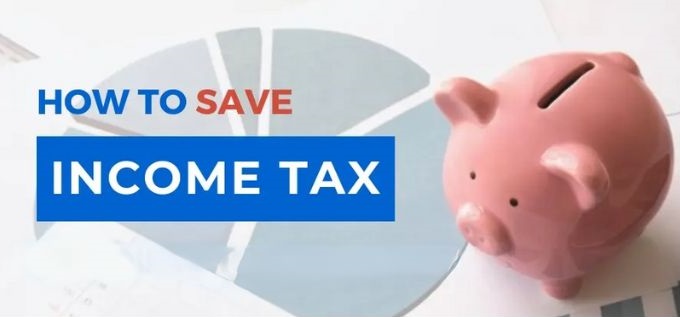
If you want to save income tax for FY 2023 – 24 then there is still time. Lets take a look on different tax deductions which you can claim upon fulfilling certain investments or other criteria these start with reductions can help you lower your total income and thus reduce your tax outgo.
Table of Contents
| S.No | Content List |
| 1 | Introduction |
| 2 | Section 80 C |
| 3 | Section 80 CCD(1B) |
| 4 | Section 80 CCD(2) |
| 5 | Section 80D |
| 6 | Leave Travelling Allowance (LTA) |
| 7 | House Rent Allowance (HRA) |
| 8 | Deduction For Home Loan Interest |
| 9 | Section 80E |
| 10 | Section 80EEB |
Income Tax Act 1961
There are multiple deductions and exemptions available in Income Tax Act 1961 which individuals can take advantage to save income taxes on the income earned during FY 2023 – 24. However, the amount of tax that an individual can save would depend upon two factors – the tax regime chosen and the expenses or the investments made by individual for claiming the set deductions. It is important to note that no changes has been made in income tax slabs for FY2024-25 (April 1st 2024 – March 31st 2025).
The new tax regime is the default tax regime from this financial year. A salaried individual has to opt specifically for the whole tax regime. If an individual opts for the old / existing tax regime, then the individual will be eligible to claim the tax exemption such as house rent allowance, leave travel concession and deductions under section such as 80C( maximum up to rupees 1.5 lakh in financial year), 80D (deduction on medical policy premium paid), 80E (interest paid on education loan) etc.
Deductions and exemptions for eligible investments or expenses
Section 80 C
A maximum reduction of rupees 1.5 lakh per financial year can be claimed by individual under section 80C. The 80 C tax benefit can only be claimed by those taxpayers who opt for the old tax regime. The eligible investments under section 80C are vast and includes investment in public Provident fund employees Provident fund, equity linked savings schemes, tax saving fixed deposits, national saving certificates etc. Even certain expenses can also be claimed under section 80C provided the expenses are actually incurred. Some of these include life insurance premium, children’s school fees, repayment of home loan principal etc. This is one of the major way to save income tax.
Section 80 CCD(1B)
By making investments in national pension system (NPS), individuals can claim up to rupees 50,000 deduction which is additional over and above the deduction under section 80C. The deduction under section 80 CCD 1B of up to rupees 50,000 is over and above the threshold limit of rupees 1.5 lakh under section 80C. Hence combining both the deduction and individual can claim up to rupees 2,00,000 as deduction under the old tax regime. This is also a way to save income tax.
Section 80 CCD(2)
Deduction under section 80 CCD can only be claimed if an individual’s employer government or private contributes to the individuals and PS account. The maximum deduction that a private sector employee can claim is 10% of his her salary where salary means basic plus DNS allowance DA. Government employees can claim up to 14% of salary as a deduction under section 80 CCD (2).
There is another condition where is employers contribution to NPS, EPF and a superannuation fund is eligible for deduction only up to rupees 7.5 lakhs in a financial year. If the total contribution by the employer exceeds rupees 7.5 lakhs in a financial year, then the excess contribution would be taxable in employees hand as prerequisite and any interest or dividend earn on it will also be taxable in employees hand. The 80 CCD (2) deduction is available under new and old tax regime.
Section 80D
Deductions under section 80D is available only if an individual has purchased a health insurance policy for self, spouse, dependent children, or their parents. Further, it is only available under the old tax regime. Individuals, who are below the age of 60, can claim up to rupees 25,000 as deductions under section 80D for health insurance premium paid for self, spouse, and dependent children.
Further, if the individual is paying health insurance premium for parents age below 60 years, then an additional amount i.e. rupees 25,000 can be claimed as section 80D tax deduction. People popularly choose this to save income tax.
Leave Travelling Allowance (LTA)
LTA is a reimbursement that the employee can claim in connection with himself and his family (spouse, children, parents, brother, sister) who are wholly dependent on the employee and travelling on leave to any place in India. The Income Tax Act has defined what are the parameters to follow to get the amount which can be claimed as deduction for LTA. The 88 exemption can apply only to the domestic travel expenses, such as airfare, train or bus fare, incurred by the employee.
Other expenses, such as transportation within the destination, sightseeing, hotels, and food expenses are not covered under LTA. The LTA tax exemption is available only for those who opt for the old tax regime. This is generally chosen by salaried individuals to save income tax.
House Rent Allowance (HRA)
If an individual, who has opted for the old tax regime, is paying rent for living in a house and also gets an HR component as part of his salary structure, then he/she can claim tax exemption on HR. Having said that, if an individual does not get HR as part of his her salary but pays rent then also he/she can claim tax exemption on HR a after a specified calculation with maximum limit of 60,000 as annual rent. This is one another popular tool which is used to save income tax.
Deduction For Home Loan Interest
Under section 24B if an individual is is residing in the house for which he has taken a home loan then a deduction for interest paid on such a home loan can be claimed as a deduction. The maximum amount that can be claimed as deduction for home loan interest is rupees 2,00,000 in a given financial year. Section 24B deduction is available for the home loans interest component, for the principal component deduction of up to rupees 1.5 lakh under section 80C. This deduction is available for those who opt for the old tax regime and new tax regime in a limited capacity.
Section 80E
Under section 80 E an individual can claim deduction for interest component under an educational loan. There is no limit on maximum amount of deduction that can be claimed under section 80 E, and neither is an individual required to upload any documentary evidence for claiming such a deduction. The deduction is allowed for maximum of eight years. Only those who opt for old tax regime can avail off the 80 E tax deduction.
Section 80EEB
An individual can claim apple rupees 1.5 lakh per financial year as deduction for interest on an electric vehicle loan. However, the loan must be sanctioned between April first, 2019, and March 31st, 2023.
Standard Deduction
A standard deduction of rupees 50,000, is available to salaried individuals under both the old and the new income tax regimes.

This website page is unbelievable. The radiant substance reveals the moderator’s excitement. I’m awestruck and expect additional such astounding posts.